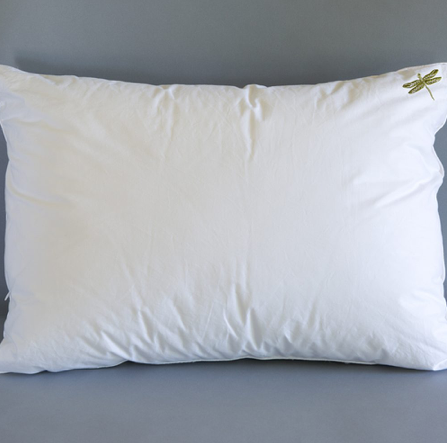The Dreampad pillow made an appearance on Shark Tank last night, but the “smart” pillow didn’t get a deal. Yes, the valuation of the deal was insane but, more than that, the Sharks didn’t understand that this isn’t a simple “pillow with a speaker inside. ” No, the Dreampad is something far more advanced. I have one and love it.

The Dreampad pillow comes in four versions. There is a Slim Support Pillow with an MSRP of $149; both the Medium and Firm Support Pillows have an MSRP of $159, and the Memory Support Pillow has an MSRP of $179. Even at the current discounts listed on the website, and a special “Buy Two for $119 each Shark Tank special”, that’s a rather insane price for “a pillow with a speaker inside.” The thing is, the Dreampad isn’t a “pillow with a speaker inside.” Instead, the Dreampad is a pillow whose “patented technology signals your internal relaxation response, helping your body and mind calm down and go to sleep.” The Dreampad makes use of bone conduction technology, so the sound travels from the pillow directly to the person whose head is placed in contact with it. Perhaps it’s best to let the company explain the technology.
The Dreampad operates on the natural principle of ‘bone conduction.’ We all hear ourselves speak in 2 ways – sound waves from our mouth travel through the air and enter our outer ear, and sound vibrations from our voice box travel internally by bone to our inner ear. (This is why your voice sounds different on a recording: you’re not hearing it with the vibrational resonance you get when you speak). The Dreampad transducers replicate that natural sound vibration. As the music travels to your inner ear, it triggers your body’s relaxation response, the parasympathetic nervous system. This results in a calming effect which is conducive to falling asleep and staying asleep.

In other words, the vibration produced by the Dreampad travels internally to your ear and creates sound only the person using it can hear. This creates the claimed “calming effect” discussed by the creator without disturbing the person sleeping next to you. It is a lofty claim that is, believes it or not, completely true. I’ve been using the Dreampad review sample I was sent for the past week, and Raina didn’t even know it. In fact, yesterday she asked me why I haven’t been using the pillow and was surprised when I told her I’d used it every night since getting it.
One positive aspect of this is that you’re not disturbing others in the room when you’re using the Dreampad. More importantly, as the vibration moves toward the bony area surrounding your middle and inner ear, it is triggering your body’s relaxation response. Clinical data suggests that the calming effect of the Dreampad is a result of the vibrational music stimulating the vagus nerve, which in turn activates the parasympathetic nervous system (PNS). Our PNS helps us regulate stress – if we’re in a state of hyper-arousal, or elevated stress, the PNS is the part of our nervous system which brings us down to a calmer place where we can relax and fall asleep.
The Dreampad was first developed for children dealing with severe anxiety. It was initially intended as a relaxation tool to deal with issues such as trauma and autism, and it worked. In fact, “in many cases, a single child’s improved sleep had shifted the dynamic of the entire household.” But a funny thing happened. Parents began reporting that, while they were pleased with the impact the pillow had on their children, they had started borrowing the pillow to aid in their sleep. That eventually led to the release of the current four-pillow lineup of consumer products. As they explain:
Although the transition from pediatric therapy pad to the new Dreampad took a while, there are some benefits in having moved slowly. Most importantly, we can be confident that it is safe and that it works for most people. (Therapists report the Dreampad has helped about 80% of their clients.)
Now I know many of you are thinking something along the lines of, “This is voodoo science or the placebo effect at best.” Well, it’s not. Columbia University completed a peer-reviewed study in 2016 that showed the Dreampad’s effectiveness with stress-related sleep problems. There have also been studies conducted with war veterans with PTSD, children with ADHD, children with autism that compared the “Dreampad effect” to music through traditional speakers and all of them, have shown a statistical difference that favored the Dreampad. I’m no scientist but, having used the pillow for a week, I’m not surprised by any of this. It does make a difference for me. Here’s why…
The Dreampad operates on the natural principle of ‘bone conduction.’ We all hear ourselves speak in 2 ways – sound waves from our mouth travel through the air and enter our outer ear, and sound vibrations from our voice box travel internally by bone to our inner ear. (This is why your voice sounds different on a recording: you’re not hearing it with the vibrational resonance you get when you speak). The Dreampad transducers replicate that natural sound vibration. As the music travels to your inner ear, it triggers your body’s relaxation response, the parasympathetic nervous system. This results in a calming effect which is conducive to falling asleep and staying asleep.
